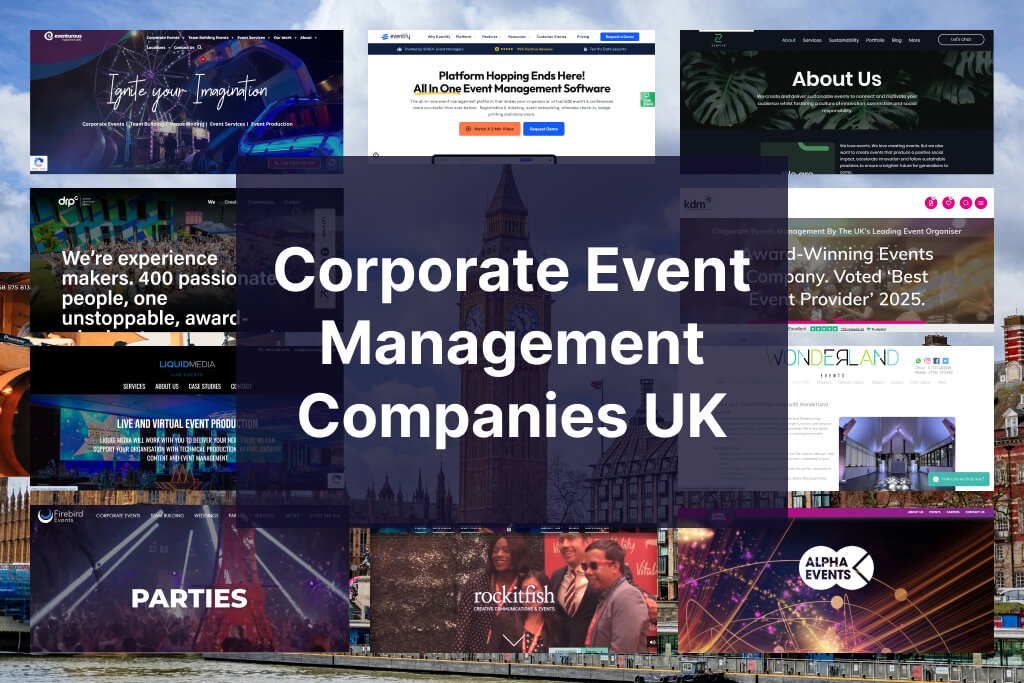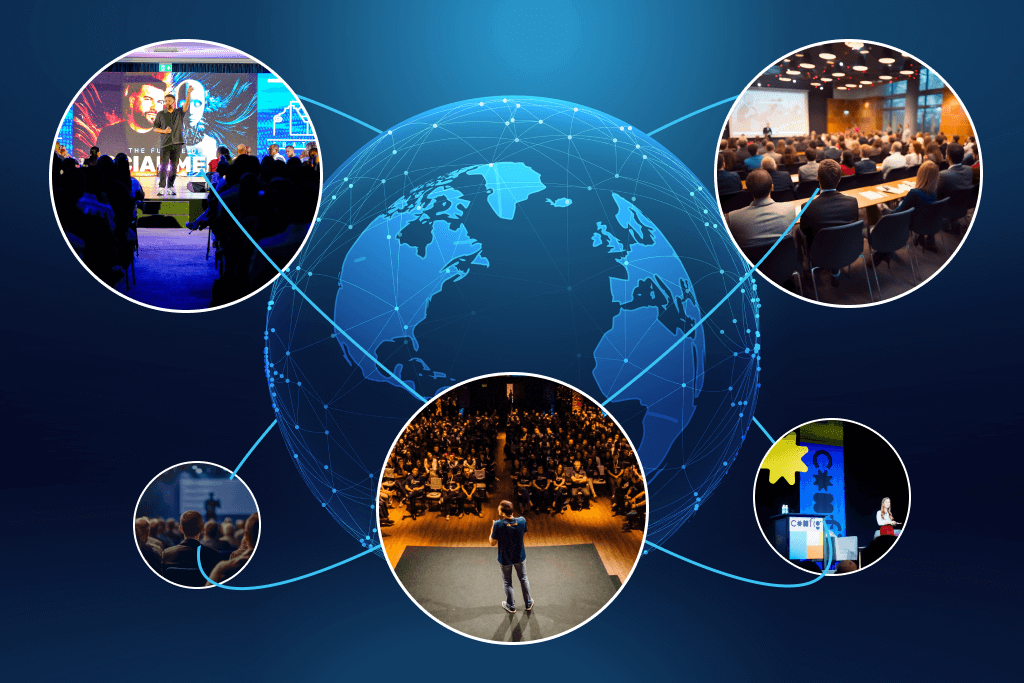Conference season is upon us! With exciting presentations, workshops, and industry experts to meet, conferences offer a treasure trove of opportunities for professional growth. They are a goldmine of opportunities – a chance to learn about industry trends, discover new technologies, and most importantly, connect with like-minded individuals. But for many, navigating the social scene of a conference can be daunting.
How To Network At a Conference
Here's your ultimate guide to networking at conferences, transforming you from a wallflower into a confident connector.
Before the Conference
- Prioritize Your Goals: Are you seeking new job opportunities, potential collaborations, or mentorship? Knowing your goals will guide your networking strategy.
- Do Your Research: Research the conference agenda, identify speakers you admire, and browse the attendee list (if available). This allows you to target specific individuals and tailor conversation starters.
- Craft Your Elevator Pitch: Prepare a concise and compelling introduction (around 30 seconds) that highlights your expertise and interests.
- Leverage Social Media: Join the conference's social media groups and follow relevant speakers and attendees. Engage in online discussions to build connections before you even arrive.
- Prepare Business Cards: Design professional business cards with your contact information and a link to your online portfolio or website (if applicable).
- Plan your time strategically: While attending sessions is important, schedule dedicated time for networking. Use the conference app or website to identify potential connections and arrange meetings in advance.
.jpeg)
During the Conference
- Make use of Event Apps: Many conferences offer mobile apps. Download the app to access the agenda, speaker bios, attendee lists (if available), and networking features.
- Project Confidence: Maintain good posture, make eye contact, and offer a firm handshake.
- Stay active online. Use conference hashtags to participate in discussions, share your insights, and connect with others attending virtually or in person.
- Be Approachable: Smile and appear open to conversation. Look for opportunities to strike up conversations with others.
- Break the Ice Strategically: Start with simple questions related to the conference or a shared experience.
- Active Listening is Key: Don't just talk about yourself. Be an active listener, ask thoughtful questions, and show genuine interest in others.
- Find Common Ground: Look for points of connection beyond small talk – shared interests, industry challenges, or even travel experiences.
- Offer Value: Think about what you can offer besides your business card. Can you connect them with someone in your network? Share a valuable resource?
- Exchange Contact Information: Before parting ways, exchange contact details via business cards, LinkedIn profiles, or email addresses.
Balancing Learning and Networking
- Multiple Sign Ups: Learning is key. Attend sessions that interest you, but leave room in your schedule for networking opportunities.
- Leave Conversations: Respect other people's time. If a conversation isn't productive, politely excuse yourself to connect with others.
Conference Logistics (Optional)
- Consider the convenience (Optional): Staying at the conference hotel can provide more opportunities for informal networking in the evenings.
- Virtual Conferences (if applicable): Familiarize yourself with the platform. Learn how to navigate virtual meeting spaces and utilize built-in chat features to connect with attendees.
.jpeg)
After the Conference
- Follow Up Promptly: Within a day or two, send a personalized email reminding them of where you met and mentioning a specific detail from your conversation.
- Stay Connected: Connect with them on LinkedIn and engage with their content. Share relevant articles or industry news to nurture the relationship.
Presentation and Follow-Up
- Focus On Your Identity: Ensure your badge is visible. Carry professional business cards with your contact information and a link to your online portfolio or website (if applicable).
- Draft Your Pitch Your Way: Craft a concise elevator pitch. Tailor your introduction to highlight your expertise and interests relevant to the person you're speaking with.
- Dress Professionally: Create a positive first impression with professional attire.
- Carry a Notebook: Take notes during sessions and jot down names or conversation points for follow-up.
- Attend Networking Events: Take advantage of dedicated networking events like breakfasts, receptions, or after-parties.
- Be Yourself: Authenticity goes a long way in building genuine connections.
"Conferences aren't just about the talks – they're about the connections. Approach networking with a genuine interest in others and a desire to build relationships, not just collect business cards." - Mitch Russo, Founder & CEO
.jpeg)
Turn Your Conference into a Networking Powerhouse: Tips for Organizers
Conferences aren't just about presentations and panels – they're prime opportunities for attendees to forge valuable connections. As an organizer, you can play a crucial role in fostering a thriving networking environment. Here are some creative ideas to transform your conference into a networking haven:
Leveraging Social Media
- Utilize Your Social Media: Promote the conference using relevant hashtags. Encourage attendees to connect with each other and share their excitement on platforms like Twitter or LinkedIn. Run contests or giveaways to generate buzz and pre-conference connections.
Creating a Conducive Space
- Design the venue layout strategically: Create designated networking areas with comfortable seating and open floor plans to facilitate interaction.
- Group Activities: Plan activities that encourage interaction beyond lectures. Organize group lunches, roundtable discussions, or team-building exercises to foster connections amongst attendees.
Gamifying the Experience
- Introduce a gamified networking element: Award points for attending sessions, connecting with a certain number of attendees, or participating in discussions on the conference app. Offer prizes like free registration for the next conference to encourage participation.
Virtual Engagement (if applicable)
- Create Caffeinated Spaces: For virtual conferences, create online "coffee rooms" where attendees can connect informally. This allows for casual conversations and networking opportunities in a virtual setting.
Innovative Networking Formats
- Organize speed networking sessions: Attendees have short, timed conversations with multiple individuals. This allows them to make a quick connection and exchange information efficiently.
- Encourage interaction between attendees, exhibitors, and speakers: Schedule meet-and-greet sessions or facilitate discussions where attendees can ask questions and network with industry experts.
.jpeg)
A Student's Guide to Networking
Conferences can be intimidating, but for students, they offer a treasure trove of opportunities. Here's a roadmap to transform you from a conference newbie into a confident networker, making the most of your experience:
Embrace the Challenge
- Embrace the Challenge: Networking isn't always easy, but the rewards are worth it. Don't be afraid to strike up conversations and introduce yourself to professionals in your field.
- Highlight Your Strengths: Don't underestimate the value of your academic journey. Be prepared to discuss your academic achievements, research projects, or relevant coursework. This showcases your passion and potential.
- Beyond Academics: (if applicable): If you participate in relevant clubs, organizations, or volunteer work, highlight these experiences! They demonstrate initiative, teamwork, and well-roundedness – valuable assets for potential employers or mentors.
Bonus Tips
- Research Speakers and Attendees: Identify speakers you admire and research companies or organizations attending the conference. This allows you to tailor your conversations and ask insightful questions.
- Prepare an Elevator Pitch: Craft a concise introduction (around 30 seconds) that highlights your skills, interests, and academic background.
- Ask Questions: Demonstrate your curiosity and eagerness to learn. Ask thoughtful questions about industry trends, career paths, or specific challenges faced by professionals.
- Follow Up After the Conference: Connect with individuals you met on LinkedIn or send a personalized email thanking them for their time and mentioning something you discussed.
- Dress Professionally: First impressions matter. Dress professionally to project confidence and seriousness about your future career.
- Enjoy the Experience: Remember, networking is also about learning and exploring your field. Attend sessions, participate in discussions, and have fun!

Conclusion
Networking is a skill that improves with practice. Don't be discouraged if initial conversations feel awkward. By following these tips and stepping outside your comfort zone, you'll be well on your way to conquering conference networking and building a valuable network of professional connections.
"Don't be afraid to step outside your comfort zone and introduce yourself to new people. The most valuable connections often come from unexpected conversations." - Meryl Johnston, CEO, National Association of Women Business Owners
By implementing these strategies, you can create a conference that goes beyond information sharing. You can foster a dynamic environment where attendees build connections, share ideas, and create lasting professional relationships. Remember, a successful conference is not just about the content, but also about the connections made within its walls (or virtual space).

.jpg)




.png)





